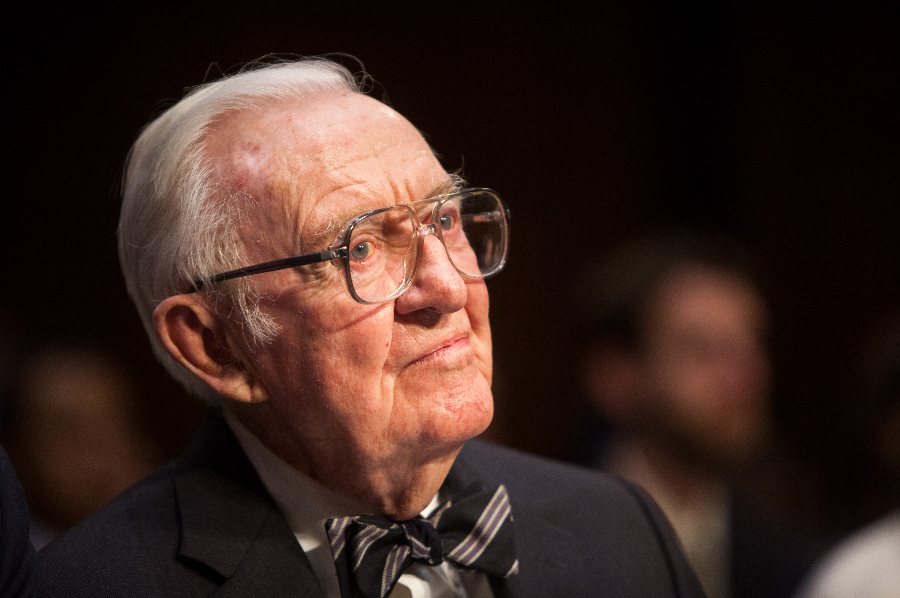By: Amy Swearer – stream.org – March 30, 2018
Former Supreme Court Justice John Paul Stevens penned an op-ed in The New York Times on Tuesday, claiming that gun control activists at recent demonstrations have not gone far enough in their demands for more restrictions on the right to keep and bear arms.
According to Stevens, it isn’t enough to deny millions of young adults the most effective means of self-defense by raising the minimum age of all firearm purchases to 21.
It isn’t enough, even, to ban the civilian possession of all semi-automatic firearms, thereby reducing law-abiding citizens to reliance on bolt-action rifles, revolvers, and pump-action shotguns.
No.
Stevens informs anti-gun advocates that they must demand a repeal of the Second Amendment.
He insists — as he did in his dissenting opinion in District of Columbia v. Heller (2008) — that the Second Amendment was centered solely on the Framers’ concerns about the threats posed by a national standing army, a concern he labels “a relic of the 18th century.”
He claims that “[f]or over 200 years after the adoption of the Second Amendment, it was uniformly understood as not placing any limits on either federal or state authority to enact gun control legislation.”
He excoriates the National Rifle Association, who he states concocted the theory of an individual right to keep and bear arms in order to perpetrate a fraud against the American public on behalf of gun manufacturers.
He demands the elimination of the Second Amendment in order to make our schoolchildren safer than they have been since the court’s 2008 Heller decision.
These allegations would be much more bearable if they were simply the result of differing interpretations of an unclear history. But this is not the case: Every single allegation Stevens makes is objectively untrue.
1. The Framers — not the NRA — first articulated the Second Amendment as protecting an individual right.
While it is true that the founding generation mistrusted standing armies, the Federalists and Anti-Federalists maintained basic, implied assumptions throughout their disagreements over the drafting and ratification of the Constitution — including the understanding that the new Constitution gave the federal government no authority to disarm the citizenry.
That individuals had an underlying right to keep and bear arms was simply assumed. In the words of prominent Second Amendment scholar Nelson Lund, the debate “was only over the narrow question of whether an armed populace could adequately assure the preservation of liberty.”
Consider the following:
James Madison, in Federalist No. 46, distinguished armed individuals from the protections of federalism and the existence of the militia: “Besides the advantage of being armed, which the Americans possess over the people of almost every other nation, the existence of subordinate governments, to which the people are attached and by which the militia officers are appointed, forms a barrier … more insurmountable than any which a simple government of any form can admit of.”
Noah Webster provided the following summary during the ratification debates: “Before a standing army can rule, the people must be disarmed; as they are in almost every kingdom in Europe. The supreme power in America cannot enforce unjust laws by the sword; because the whole body of the people are armed … .”
Samuel Adams, at the Massachusetts Ratifying Convention, declared: “The Constitution shall never be construed … to prevent the people of the United States who are peaceable citizens from keeping their own arms.”
Similar understandings can also be found from, among others, George Washington, Thomas Jefferson, and George Mason. These Founders were not articulating an original idea, either, but building on the foundations laid by such scholars as William Blackstone, Cesare Beccaria, and John Locke.
2. The existence of an individual right to keep and bear arms is apparent throughout the nation’s history.
To see the remainder of this article, click read more.
Source: John Paul Stevens Is Wrong About the Second Amendment, History, and School Violence
 Listen Online
Listen Online Watch Online
Watch Online Find a Station in Your Area
Find a Station in Your Area








 Listen Now
Listen Now Watch Online
Watch Online
